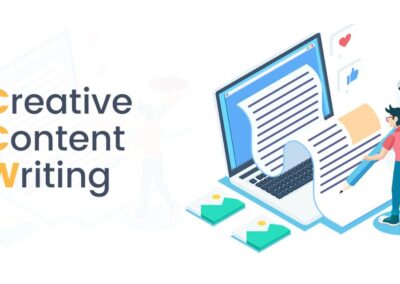The terms “search engine friendly” and “search engine optimized” are often used interchangeably, but they have different meanings. Search engine friendly refers to making sure a website is coded in a way that allows search engines to crawl the site and index its content. To be search engine optimized, however, means that the website has been designed and developed with SEO best practices in mind. This includes using relevant keywords, optimizing meta tags, creating high-quality content, and other strategies to make the site more visible in search engine results pages (SERPs).
Search engine optimization is an ongoing process that requires constant monitoring and updating of a website’s content and structure. It involves researching relevant keywords, creating engaging content to attract visitors, optimizing images for faster loading times, and ensuring that all links on the page are functioning properly. SEO also requires staying up-to-date with the latest algorithm changes from major search engines like Google so that your website can remain competitive in SERPs.
To be truly search engine optimized, websites must also ensure they are user-friendly as well as search engine friendly. This means having clear navigation menus, easy-to-read text, and providing helpful information to visitors quickly. Additionally, websites should be mobile-friendly since more users are accessing them from their phones or tablets than ever before. By following these guidelines, websites can increase their visibility in SERPs while also providing an enjoyable experience for their users.
SEO requires making a website search engine friendly, optimizing content, researching keywords and staying up-to-date with algorithm changes. Additionally, websites must be user-friendly and mobile-friendly to be fully optimized.
Is it Really Necessary to be Search Engine Friendly?
Search engine friendly design and content are essential for any website’s success. It is the foundation of a successful online presence, as search engines are the primary way that visitors find websites. A website that is not optimized for search engine crawlers will struggle to rank high in search engine results pages (SERPs), resulting in fewer organic visits from potential customers.
Why is it Necessary?
The main reason why it is necessary to have a website that is search engine friendly is because it helps you reach more potential customers. When your site appears higher in SERPs, more people will be exposed to your brand and products or services. Additionally, when your website is optimized for search engine crawlers, they can quickly identify the topics covered on your site, which makes it easier for them to deliver relevant results to users looking for specific information. This increases the chances of those users visiting your website instead of one of your competitors’ sites.
How Can You Make Your Site Search Engine Friendly?
Making sure your site is search engine friendly involves optimizing different elements like URLs, headers, and coding.
URLs:
URLs should be concise and descriptive so that both users and search engines can easily understand what each page contains. Additionally, they should include keywords related to the topic so that they appear more prominently in SERPs and attract more organic traffic.
Headers:
Headers are also important for SEO purposes as they help provide structure to webpages and make them easier for both users and crawlers to navigate. Headers should include relevant keywords but should also be written in a way that makes sense grammatically and reads naturally.
Coding:
Using semantic HTML coding is also key when creating a search engine friendly website as it helps ensure that all elements are properly labeled and organized, making them easier for search engines to crawl. Additionally, using proper coding techniques ensures that all content on the page is visible and accessible regardless of device or browser used by visitors.
Finally, keeping up with Google’s algorithms and penalties is essential if you want your site to remain visible in SERPs over time. Google regularly updates its algorithms to ensure that only relevant content appears at the top of SERPs; thus, understanding their guidelines can help you optimize your content accordingly so that it remains visible even after algorithm changes. Additionally, if you fail to follow their guidelines or use black hat SEO tactics, Google may penalize your website by lowering its rankings or removing it from SERPs altogether; thus, staying informed about their policies can help you avoid such penalties.
In conclusion, having a website that is optimized for both users and search engines can help you reach more potential customers while avoiding penalties from Google; thus, making sure your site is truly search engine friendly should be a priority if you want long-term success online.
| Element | Benefits |
| URLs | Should be concise and descriptive, include keywords related to the topic. |
| Headers | Provide structure to webpages, include relevant keywords. |
| Coding | Ensure elements are properly labeled and organized, content is visible and accessible regardless of device or browser used by visitors. |
| Algorithms/Penalties | Understanding Google’s guidelines can help optimize content accordingly, avoid penalties from Google. |
URLs
The URL of a website is an important factor when it comes to search engine optimization. URLs should be descriptive and include keywords that are relevant to the content on the page. URLs should also be kept short and simple, as long and complicated URLs can be difficult for search engines to index. Additionally, URLs should contain hyphens instead of underscores or other characters to make them easier to read.
Static vs Dynamic URLs
Another important factor when it comes to URLs is whether they are static or dynamic. Static URLs are those that remain the same no matter how many times a page is accessed or updated, while dynamic URLs change each time a page is accessed or updated. Search engines prefer static URLs as they are easier to crawl and index. It’s also important to note that if you have multiple versions of the same page with different parameters in the URL, search engines may consider this duplicate content and penalize your site accordingly.
Canonicalization
In cases where there are multiple versions of the same page, it’s important to use canonicalization in order to tell search engines which version of the page is the primary one. This can be done by using a rel=”canonical” tag in the HTML code of each page, which points to the primary version of the page. This ensures that search engines know which version of the page should be indexed and prevents any potential penalties due to duplicate content.

Overall, having a well-structured URL structure with descriptive keywords is key for optimizing your website for search engines. It’s also important to ensure that all pages have unique and static URLs, and use canonicalization when needed in order to avoid any potential penalties related to duplicate content.
URLs should be descriptive, short, simple & include hyphens; static preferred over dynamic; use canonicalization to avoid penalties.
Headers
Headers are an important factor for search engine optimization (SEO). They help search engines understand the structure of a website and offer clues about the content. Headers are also used to break up text into sections, making it easier for readers to find what they’re looking for.
Header Tags
The most common type of header tags are H1, H2, H3, and so on. These tags indicate the importance of the section or subsection in the overall structure of a website. The higher the number, the less important the section is. For example, an H1 tag would be used for a main heading while an H2 tag would be used for a subheading within that section.
Content Within Headers
When creating headers for SEO purposes, it’s important to include relevant keywords in them. This will help search engines understand what the page is about and can improve rankings in search results. It’s also important to keep headers short and concise; this makes them easier to read and scan for readers.
Header Hierarchy
It’s important to maintain a consistent hierarchy when using header tags. This means that each header should be followed by another header of equal or greater importance; otherwise, it could confuse both readers and search engines. For example, if there is an H2 tag followed by an H4 tag, then there should have been an H3 tag between them.
Conclusion
Headers are an important part of SEO as they provide structure and context to webpages. It’s important to use relevant keywords in headers and maintain a consistent hierarchy when using header tags. Doing so can help improve rankings in search results and make pages easier to read for users.
| Header Type | Importance | Keywords | Hierarchy |
| H1 | Main | Yes | Yes |
| H2 | Sub | Yes | Yes |
| H3 | Sub-Sub | Yes | Yes |
Coding
Coding is an important aspect of search engine optimization (SEO) as it helps to ensure that the website meets the requirements for being both search engine friendly and optimized. Proper coding can help to improve the overall performance of a website, making it easier for search engines to index and rank pages. It also ensures that the content is properly structured and formatted, so that visitors can easily navigate through the site.
Semantic HTML
Semantic HTML is one of the most important aspects of coding for SEO purposes. Semantic HTML involves using HTML tags such as , , , and to structure content on a page in a way that makes it easier for search engines to read and understand. This type of coding helps to ensure that the page contains relevant information in an organized manner, which can help with ranking.
Optimizing CSS and JavaScript
CSS and JavaScript are two other important aspects of coding for SEO purposes. When optimizing these elements, it is important to ensure that they are properly coded so that they do not slow down page loading times or interfere with how search engines crawl the page. Additionally, any external CSS or JavaScript files should be minified where possible to reduce file sizes and further improve loading times.
Image Optimization
Images are another important element when it comes to coding for SEO purposes. It is important to make sure that all images used on a website are properly optimized by reducing their file size where possible, and using descriptive alt text so that search engines can understand what each image is about. Additionally, including captions with images can help to provide additional context for search engines.
In conclusion, proper coding is essential for ensuring that websites are both search engine friendly and optimized. By following best practices such as using semantic HTML tags, optimizing CSS and JavaScript files, and optimizing images, websites can be better prepared for successful rankings in major search engines like Google.
Google Penalties and Algorithms
Google is constantly updating its algorithms to ensure that only the best websites appear at the top of search engine results. To ensure that websites meet their standards, Google has implemented several penalties and algorithms which are designed to punish websites that use unethical or manipulative tactics.
Manual Actions
Manual actions are when a Google employee manually reviews a website and decides to impose a penalty if it does not meet their guidelines. These penalties can range from partial demotions in search rankings to complete removal from Google’s index. Manual actions are often triggered by webmasters who have used black-hat SEO techniques such as keyword stuffing, link buying, cloaking, hidden text, etc.
Algorithmic Penalties
Algorithmic penalties are automated sanctions imposed by Google’s algorithm after it detects suspicious activity on a website. These penalties can be triggered by anything from thin content to low quality backlinks and can result in reduced rankings or even de-indexing of the website. Algorithmic penalties are usually more difficult to identify than manual actions as they do not require manual intervention from Google employees.
Panda & Penguin Updates
The Panda and Penguin updates were two major algorithmic changes made by Google in 2011 and 2012 respectively. The Panda update was designed to target websites with thin or poor quality content while the Penguin update was aimed at penalizing websites that had engaged in unnatural link building practices such as buying links or participating in link schemes. Both updates had significant impacts on the search engine rankings of many websites and continue to affect how Google evaluates websites today.
Mobile-Friendly Update
In 2015, Google released an update known as the “Mobile-Friendly Update”. This update was designed to reward websites that were optimized for mobile devices with higher rankings in mobile search results. Websites that were not optimized for mobile devices saw their rankings drop significantly as a result of this update. As more people use mobile devices to access the internet, it is important for webmasters to make sure their sites are optimized for mobile devices in order to remain competitive in search engine results pages (SERPs).
Overall, it is important for webmasters to understand how Google’s algorithms work in order to avoid any potential penalties or demotions in SERPs. By following best practices and avoiding any unethical tactics, webmasters can ensure that their sites remain competitive and rank highly in SERPs for relevant keywords and phrases.






